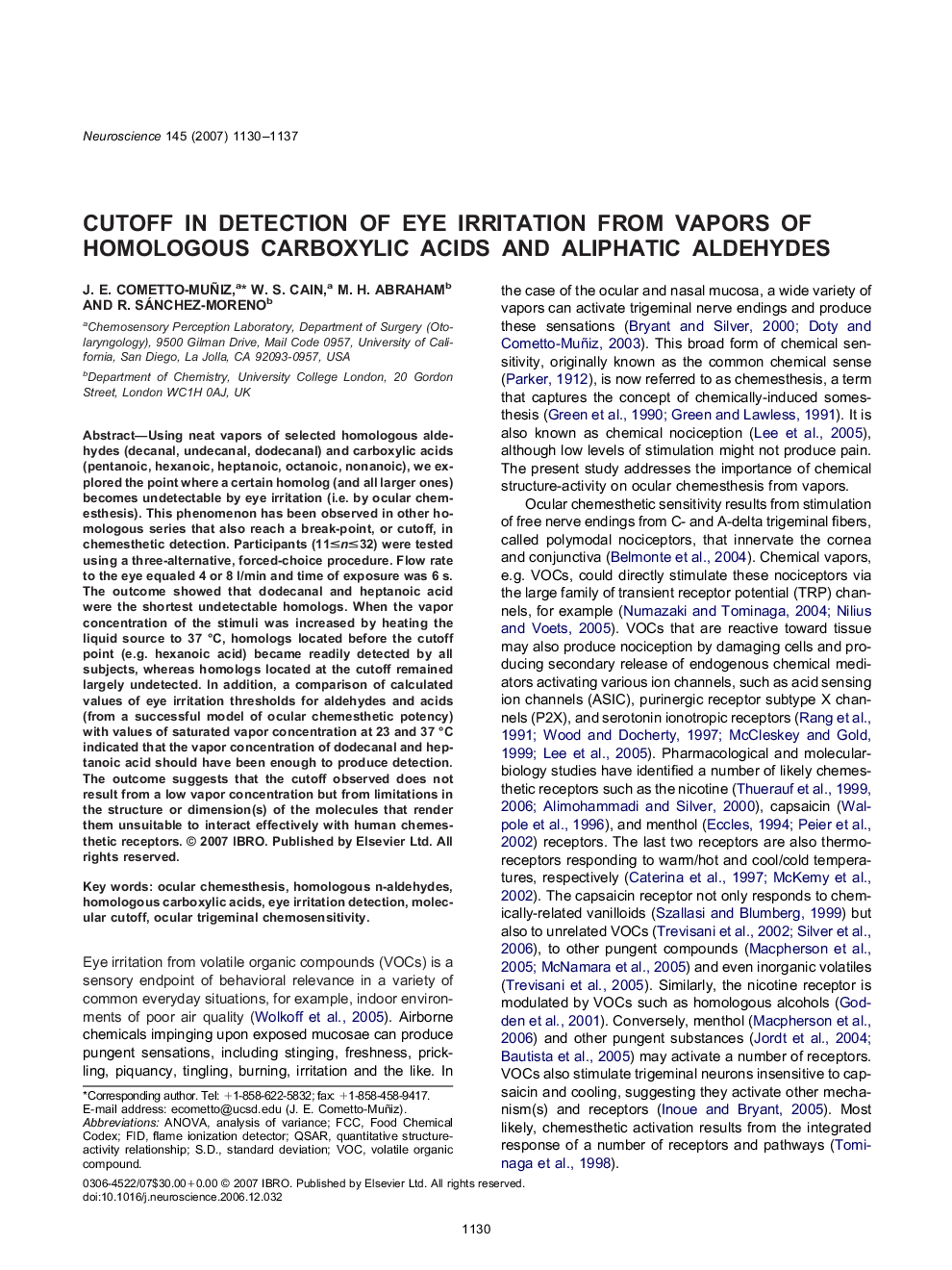| کد مقاله | کد نشریه | سال انتشار | مقاله انگلیسی | نسخه تمام متن |
|---|---|---|---|---|
| 4342166 | 1295858 | 2007 | 8 صفحه PDF | دانلود رایگان |

Using neat vapors of selected homologous aldehydes (decanal, undecanal, dodecanal) and carboxylic acids (pentanoic, hexanoic, heptanoic, octanoic, nonanoic), we explored the point where a certain homolog (and all larger ones) becomes undetectable by eye irritation (i.e. by ocular chemesthesis). This phenomenon has been observed in other homologous series that also reach a break-point, or cutoff, in chemesthetic detection. Participants (11≤n≤32) were tested using a three-alternative, forced-choice procedure. Flow rate to the eye equaled 4 or 8 l/min and time of exposure was 6 s. The outcome showed that dodecanal and heptanoic acid were the shortest undetectable homologs. When the vapor concentration of the stimuli was increased by heating the liquid source to 37 °C, homologs located before the cutoff point (e.g. hexanoic acid) became readily detected by all subjects, whereas homologs located at the cutoff remained largely undetected. In addition, a comparison of calculated values of eye irritation thresholds for aldehydes and acids (from a successful model of ocular chemesthetic potency) with values of saturated vapor concentration at 23 and 37 °C indicated that the vapor concentration of dodecanal and heptanoic acid should have been enough to produce detection. The outcome suggests that the cutoff observed does not result from a low vapor concentration but from limitations in the structure or dimension(s) of the molecules that render them unsuitable to interact effectively with human chemesthetic receptors.
Journal: Neuroscience - Volume 145, Issue 3, 30 March 2007, Pages 1130–1137